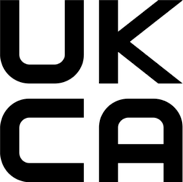
With the transition period following Brexit rapidly coming to an end, there may still be a lot to resolve, but what we know for sure is that new product marks will apply.
While the UK was a member of the EU, we became very familiar with the ‘CE’ symbol. Although we’ll continue to see it, and in many cases still use it, there will be new markings for us here in the UK as from the start of next year. We thought it would be helpful to set out the details relative to our products and items closely associated with them.
UKCA (United Kingdom Conformity Assessed) marking will replace the CE mark at the end of the transition period, i.e. from 1 January 2021. Although that’s not far ahead, companies will usually be able to use the CE mark up to the end of 2021, subject to maintaining the current requirements for showing it. If UK and EU rules governing the use of the mark diverge during 2021, it will no longer be possible to use the CE mark. From 1 January 2022, UKCA marking will be the only form recognised in Great Britain.
The words ‘Great Britain’ are to be noted because UKCA marking will not apply in Northern Ireland. Instead, CE marking there will be replaced by UK(NI) marking.
This is the UKCA symbol.

Note that the letters forming the UKCA marking must be kept in proportion to this version and at least 5mm in height (unless a different minimum has been specified in separate legislation).
It must be easily visible, legible and, from 1 January 2023, permanently attached to the product it relates to.
The CE mark will still be used when exporting goods for marketing anywhere in the EU. Such goods will of course need to fulfil the requirements that go with showing the mark. The CE mark can be shown in addition to the UKCA mark on a product where compliance with both is satisfied, but the CE mark will have no legal status in the UK after 31 December 2021, and the UKCA mark will similarly have no status within the EU.
Although EU and UK criteria may diverge over time, at 1 January next year the testing basis behind the CE and new UKCA marks is unchanged. When you start to see our products with a UKCA mark rather than a CE one, you can still be completely confident that they have been fully tested for both fire safety and endurance.
Sources:
https://www.gov.uk/guidance/using-the-ukca-mark-from-1-january-2021
We thought it would be helpful to show the standards that apply within our industry. We will update this as the designations change.
Standards prefixed with BS EN are effectively the UK versions of standards applied within the EU. We can expect to see the EN letters gradually dropped if and when UK standards diverge from their EU equivalents.
BS EN 1154: Building hardware. Controlled door closing devices. Requirements and test methods
This is the main standard for controlled door closing devices and confirms that the product has been tested for performance to 500,000 cycles, corrosion resistance and the ability to self-close.
BS EN 1155 Electrically powered hold-open devices for swing doors – requirements and test methods
This standard governs electromagnetic door closing devices and is referenced by the CE mark.
(See also BS8300 below.)
BS EN 1634-1: Fire resistance and smoke control tests for door and shutter assemblies
(BS EN 16034 references this standard)
Products have to be tested to this standard to obtain the CE marking fire classification.
BS EN 1634-3: Fire resistance and smoke control tests for door and shutter assemblies, openable windows and elements of building hardware
While a door closer on its own can’t stop smoke, and therefore cannot achieve this standard, a door assembly – including the door closer present – can be tested against this standard.
BS EN 13501-1: Fire classification of construction products and building elements
Provides the reaction to fire procedure for all products and building elements and gives the standard for how products are tested. It is referenced in EN 1634-1 test reports.
BS476:22 Fire Test standard
British or national standard for fire resistance of doors.
BS8300
Section 7.3.2 – If the opening force for a door on a circulation route is excessive, an electrically powered hold open device meeting the requirements of BS EN 1155 (see above) should be installed.
Section 7.3.1 – Delayed action or swing-free closing devices may be used on doors to individual rooms but are not considered suitable for doors on circulation routes.
See also Building Regulation approved document M (ADM) below.
Some standards are not directly applicable to Rutland products, but are important to our customers and market
BS EN 14351 Windows and doors product standard
This standard is used in conjunction with the above BS EN 16034 standard for CE marking front-entrance doorsets.
BS EN 16034:2014 Pedestrian doorsets – fire resisting and/or smoke control characteristics
This standard affects our customers who make front-entrance doorsets.
BS 8214 Timber based fire door assemblies – Code of practice
This standard is relevant to timber door manufacturers who supply a door and frame separately for assembly on site.
BS 8529-2017 Composite doorsets – Domestic external doorsets – Specification
This affects our ‘composite’ doorset manufacturer customer base.
BS 9999 2017 Fire safety in design, management and use of buildings – Code of practice
This affects installation companies and end users who use our products. It covers maintenance of fire doors and has a section that specifies how often doors are checked, including to confirm that a door closer is still fitted and the arm connected.
PAS 24 2016 Security Testing (in accordance with BS EN 1627:2011, BS EN 1628:2011, BS EN 1629:2011, BS EN 1630:2011 Burglar Resistance)
This is a British standard relevant to our customers who are manufacturers and suppliers of security front-entrance doors. When fitted to these doors, our closers and hardware have to be subject to this test.
ADB (Approved Document B, commonly referred to as Doc B)
This contains guidance on fire safety, including means of escape and fire spread. It mentions that door closers must be self-closing and CE marked.
ADM (Approved document M, or Doc M)
This relates to the Equalities Act 2010 (which replaced several earlier Acts, including the Disability Discrimination Act) and sets rules around accessibility, approved door widths, access, ease of opening, etc
ADQ (Approved document Q, or Doc Q)
This document came into effect on 1 October 2015. It states that all easily accessible doors and windows supplied to new-build properties must comply with certain security requirements.
Leave us your contact details and we will call you back for a free consultation about your requirements.